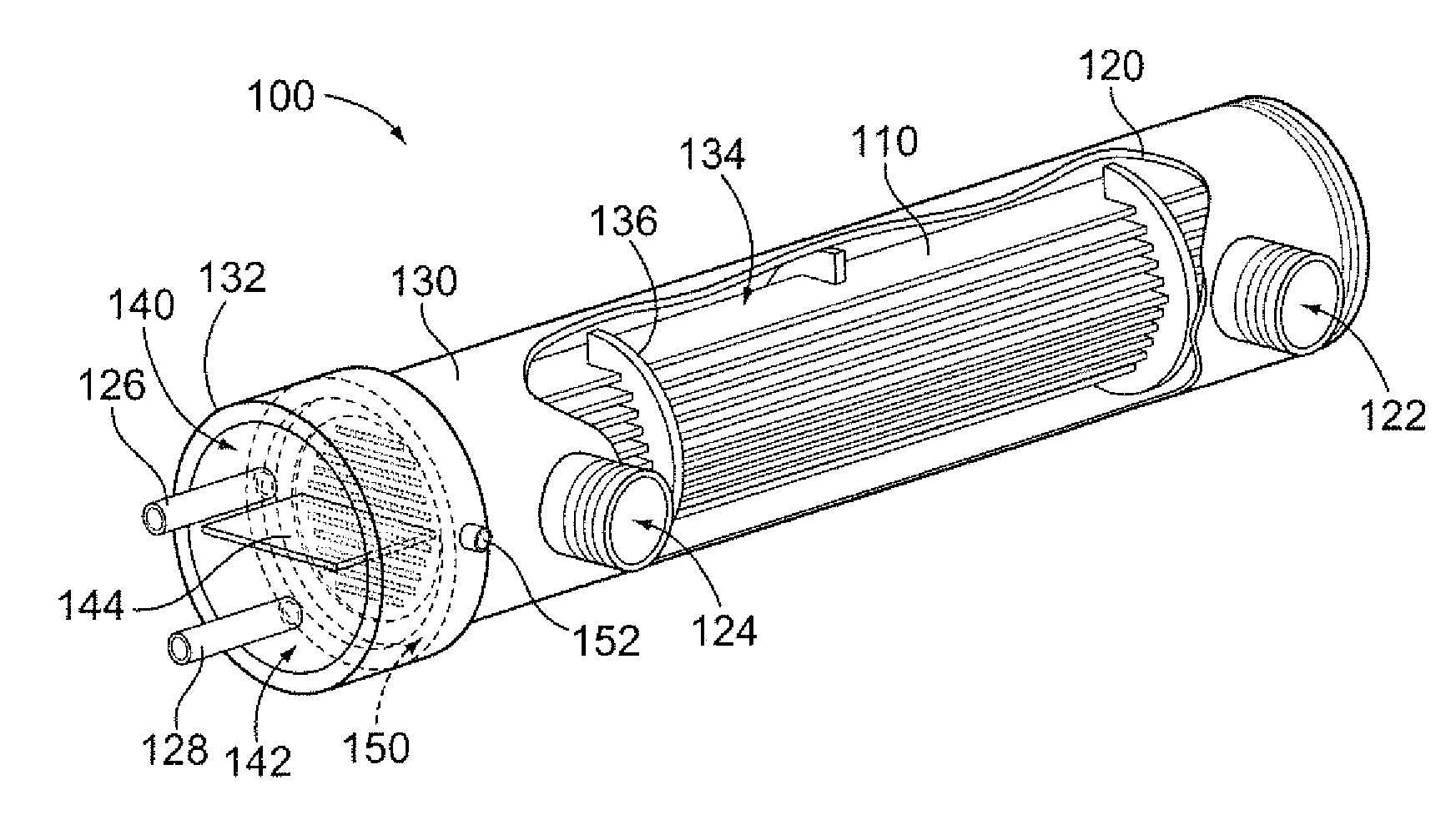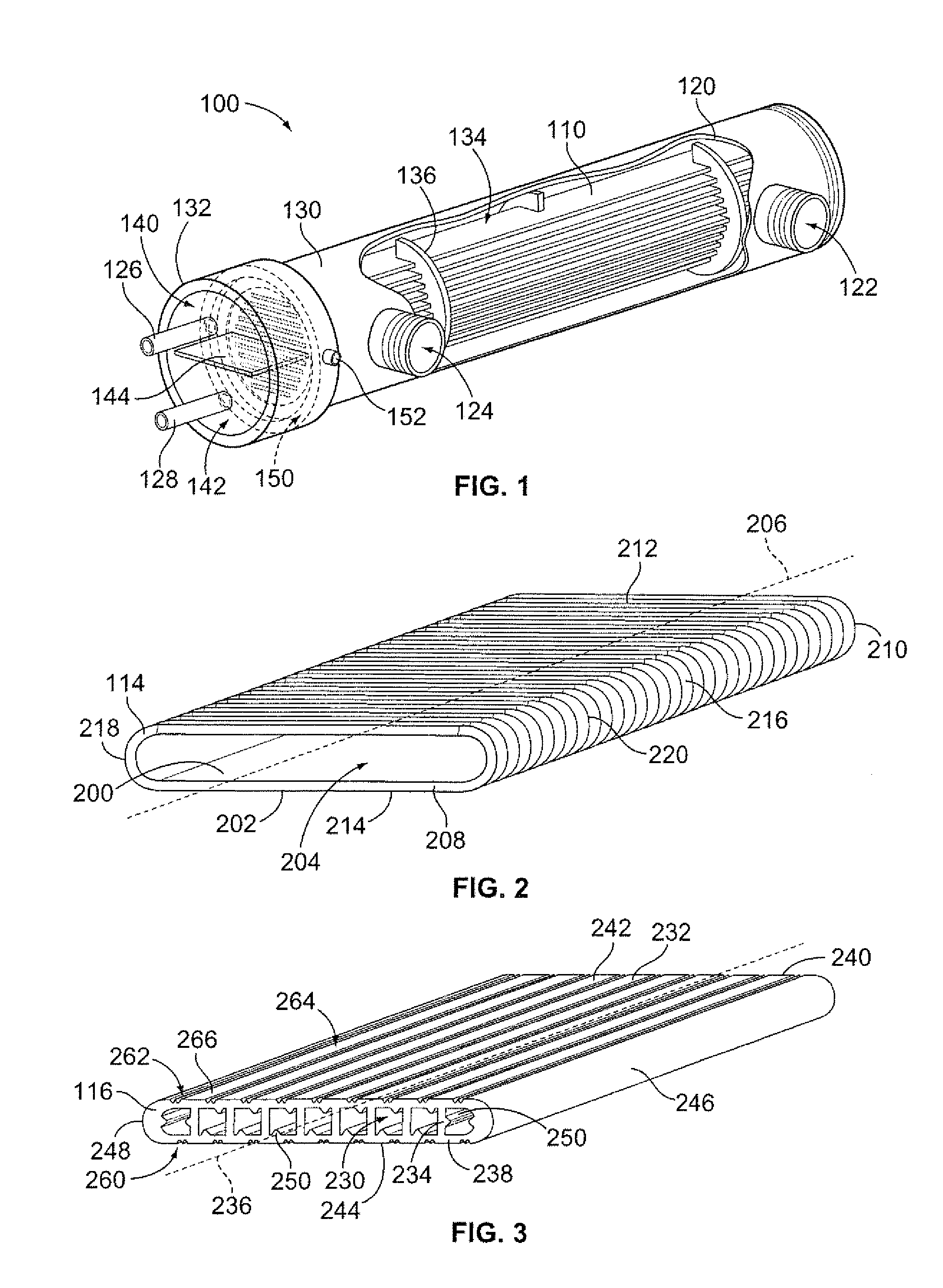Heat transfer system
a technology of heat transfer system and water heater, which is applied in the field of energy conservation, can solve the problems of high energy cost to maintain the hot water temperature, inefficient heat transfer of water in storage tanks, and scalding of humans with high temperature 140° f. storage tank water, etc., and achieves the effect of increasing the surface area of the microchannel, increasing the surface area of the exterior surface, and increasing the thermal transfer
- Summary
- Abstract
- Description
- Claims
- Application Information
AI Technical Summary
Benefits of technology
Problems solved by technology
Method used
Image
Examples
Embodiment Construction
[0029]FIG. 1 illustrates a heat exchanger 100 formed in accordance with an exemplary embodiment. The heat exchanger may be used as part of a heat transfer system 102 (shown in FIG. 6), such as a vapor compression system. Those skilled in the art of vapor compression systems know that the refrigerant in the heat transfer system 102 goes through four phases. The desuperheater is single phase gas heat transfer. The condenser is a bi-phase heat transfer from a gas to a liquid. The sub-cooler is a single phase liquid heat transfer. Finally the evaporator is a bi-phase going from a liquid to a gas heat transfer. In an exemplary embodiment, heat exchangers, such as the heat exchanger 100, are used at each of the phases. The heat exchangers 100 may be altered to take advantage of the particular phase of the refrigerant, but generally include similar features.
[0030]The heat exchanger 100 includes a plurality of heat transfer devices 110 held within a housing 120. In an exemplary embodiment, ...
PUM
| Property | Measurement | Unit |
|---|---|---|
| temperature | aaaaa | aaaaa |
| temperature | aaaaa | aaaaa |
| GWP | aaaaa | aaaaa |
Abstract
Description
Claims
Application Information
 Login to View More
Login to View More - R&D
- Intellectual Property
- Life Sciences
- Materials
- Tech Scout
- Unparalleled Data Quality
- Higher Quality Content
- 60% Fewer Hallucinations
Browse by: Latest US Patents, China's latest patents, Technical Efficacy Thesaurus, Application Domain, Technology Topic, Popular Technical Reports.
© 2025 PatSnap. All rights reserved.Legal|Privacy policy|Modern Slavery Act Transparency Statement|Sitemap|About US| Contact US: help@patsnap.com



